Summary
Cheryl Hernández loves Seton’s printable weekly lesson plans because they help her students stay on target and complete their assignments on a timely basis.If your student is enrolled with Seton, and you haven’t been using the printable online lesson plans, you may want to check them out.
Over the course of 28 years*, we have enrolled our nine children with Seton Home Study School, with seven Seton graduates. That tells you we are big fans of the excellent curriculum Seton provides.
One of the many reasons we love the curriculum is the ease of printable weekly lesson plans, primarily because they help my students (and me) to stay on target and complete each year on a timely basis.
The big stack of lesson plans sent with your student’s curriculum each year can be rather daunting for a parent. For a young child to be handed them can be even more daunting! The purpose of the online lesson plans is to simplify things, breaking down assignments on a daily basis, making them far less intimidating — even happily doable!
I would encourage you, if you are not using this feature already, to take a peek and maybe just try it this year, and see what you think. Here are five good reasons to do so…
1. They are simple and easy to use.
When you go on to your student’s MySeton page, simply scroll down to the tab that says “Print daily lesson plans”. On the Daily Lesson Plan Creator, you can choose to print either weekly plans or daily — just click on the tab you would prefer. When you have selected the courses to be printed (and the week you would like), select “Create Lesson Plans”, and you will be able to view them in your word processing application. Here’s where you can edit and customize the plans for each student before you print (more on that in #4).
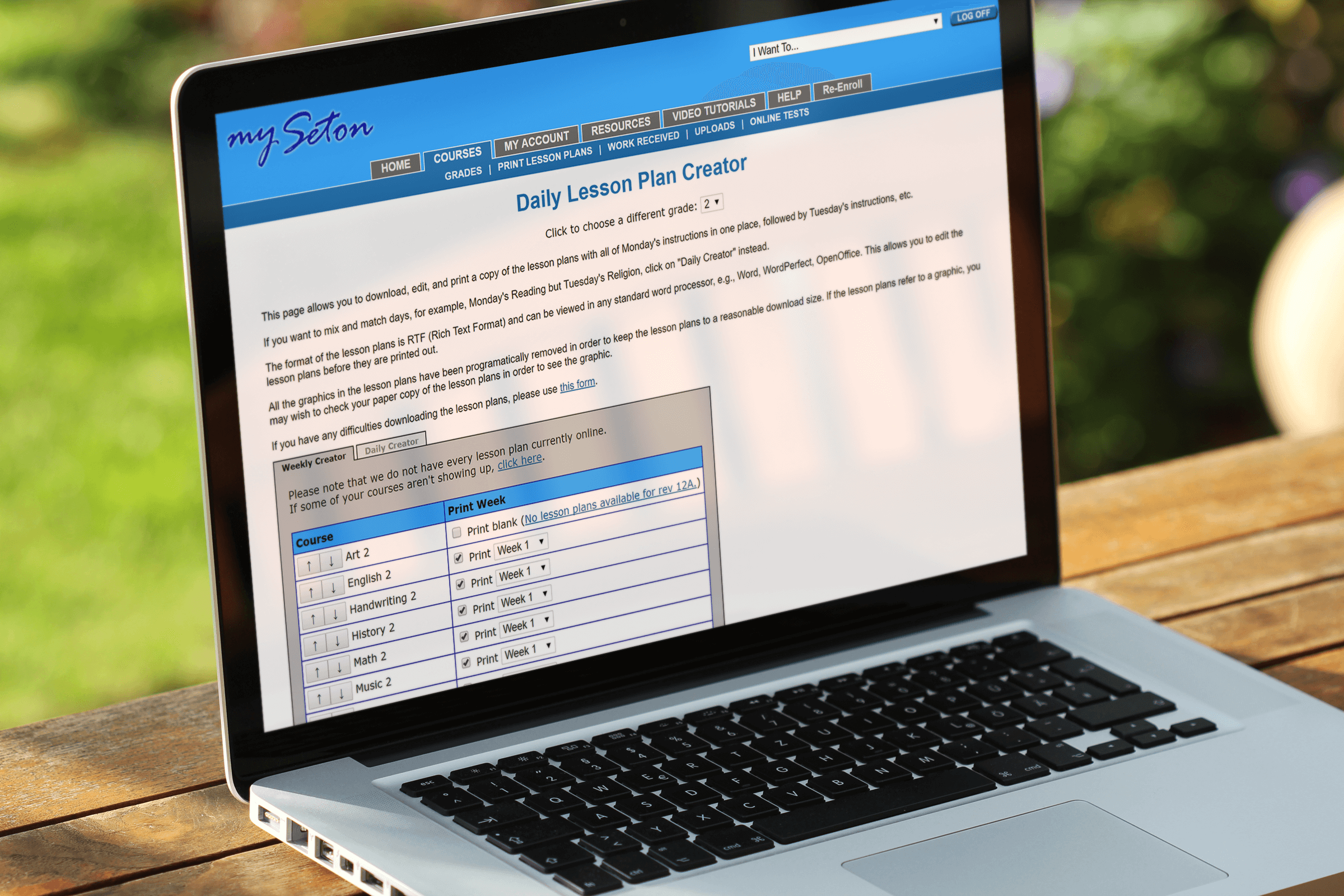
2. Choose weekly or daily lesson plans.
Many families, especially those with younger students, use the daily lesson plans. This is especially good if you don’t want your child to be overwhelmed with an entire week’s worth of work. At the beginning of the school day, you can then go over the daily assignments, printed out on one sheet, with your student. At the end of the school day, your student can come to you to check off each subject.
My children prefer the weekly lesson plans because they like to know what is expected each week. The older children, especially, can then manage their time accordingly. For instance, if they know there will be a history test on Thursday that week, but our homeschool coop meets that morning, they may opt to postpone the test until Friday so they will have more time to study.
With older students, they have more flexibility to manage their weekly work themselves, as long as the work is complete by the end of the week. This teaches them organization and responsibility. If the plan doesn’t work out as expected, they are required to finish the work over the weekend.
Often, this makes them rethink how much flexibility they want to give themselves the next week. Often, too, they will think of ways to manage their time better so assignments get finished on time.
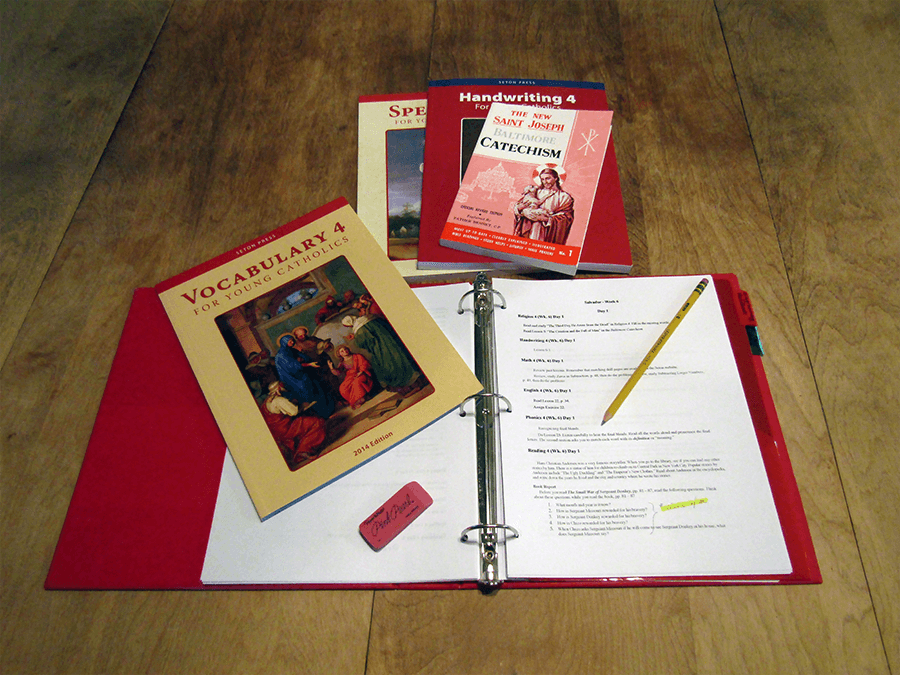
3. Accountability is good for everyone!
Over the years, our family has had up to 6 students fully enrolled with Seton at one time. That’s a lot of assignments for a parent to keep track of! Things can easily get lost in the shuffle.
At the end of the quarter, when a student needs to send in all the requirements, there will invariably be a paragraph, a science test, or a few quizzes that got overlooked. This is where the online lesson plans help everyone to keep organized.
My children come to me each Friday to go over their lesson plans from that week. They check off assignments as they are completed. We make sure that nothing was missed, and the week is deemed “complete”.
The younger kids liked when I drew a funny face or put stickers on the lesson plans at the end of a completed week. My older ones, instead, will take great pleasure (and dramatics) ripping the completed week’s lesson plans out of the binder, crumple them up, and toss them into the waste basket across the room.
If, however, some assignments did not get done, I highlight them and send them back to their desk (or have them complete them over the weekend). Not only are weekly lesson plans a great way for a parent to stay on top of the required assignments, but it helps the student to learn responsibility.
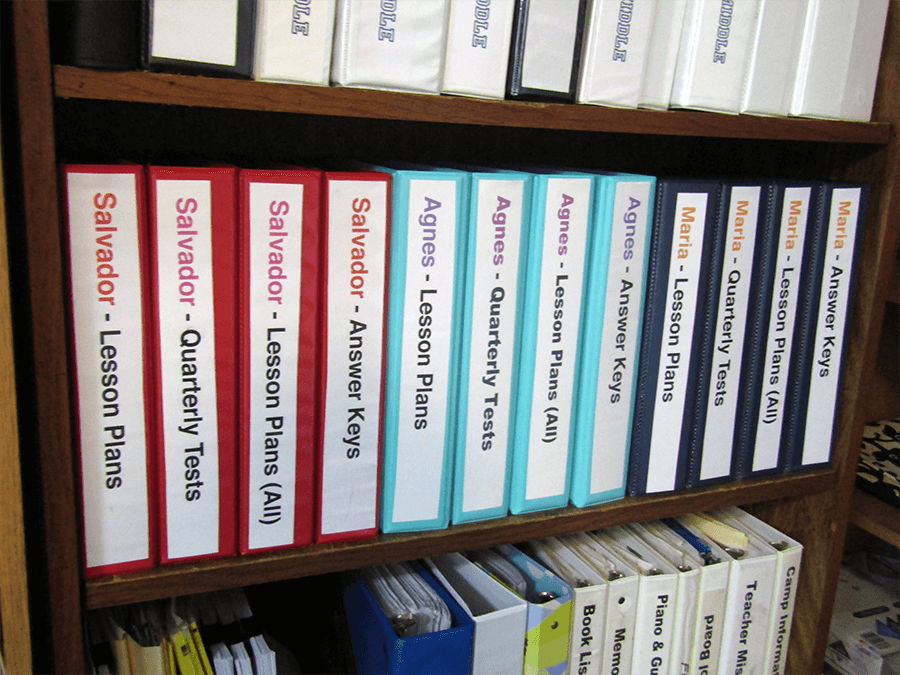
4. Customize your lesson plans.
This is my favorite part of the online printable lesson plans. Before they are printed, each subject gets put in the order in which I want them completed each day.
For instance, if I want my child to begin each day with his Religion assignment, that gets put to the top of the plans. (Use the arrows to place each subject where you would like). When my son was younger and working on his cursive, which would invariably go downhill as the morning progressed, I would put Handwriting as the next subject.
The next subjects usually go in order of difficulty. Math, for instance, would go next, followed by English. The last subjects would be the simpler ones for him — Vocabulary, for example.
I omit some subjects on their weekly lesson plans by simply not checking the box – Physical Education, Music and Art. Not that they don’t do these subjects — but they are done in a less structured manner, with no “required assignments”. So to simplify, I leave them off the lesson plans.
On the Daily Lesson Plan Creator, some subjects will say “Print blank (No lesson plans available.)” I check these – Spelling, for instance, because I want the lesson plans to have a place for Spelling each day. After the plans are printed, I will pencil in the required Spelling assignment.
For example, I will pencil in on Monday “4A”, meaning “Week 4, lesson A”. On Fridays, I will pencil in “Quiz” so my student knows there will be a quiz on the words that week (and so I don’t forget). For Saxon Math, I do the same, penciling in each daily math assignment, including tests.
Another great way to customize your lesson plans is to write notes or highlight specific points. I often do this more for my own benefit than for my student. For instance, if one of the reading assignments requires written questions from “This is Our Land”, I might make a note for my student to do the assignment orally with me.
Sometimes, I attach a note saying, “See mom for grade on this assignment”, so I can mark it on the quarterly report form after my student shows it to me. Some assignments I might omit altogether.
Reviewing the printed lesson plans and making simple notes prior to the beginning of each quarter makes the quarter go smoother, especially end-of-quarter grading.
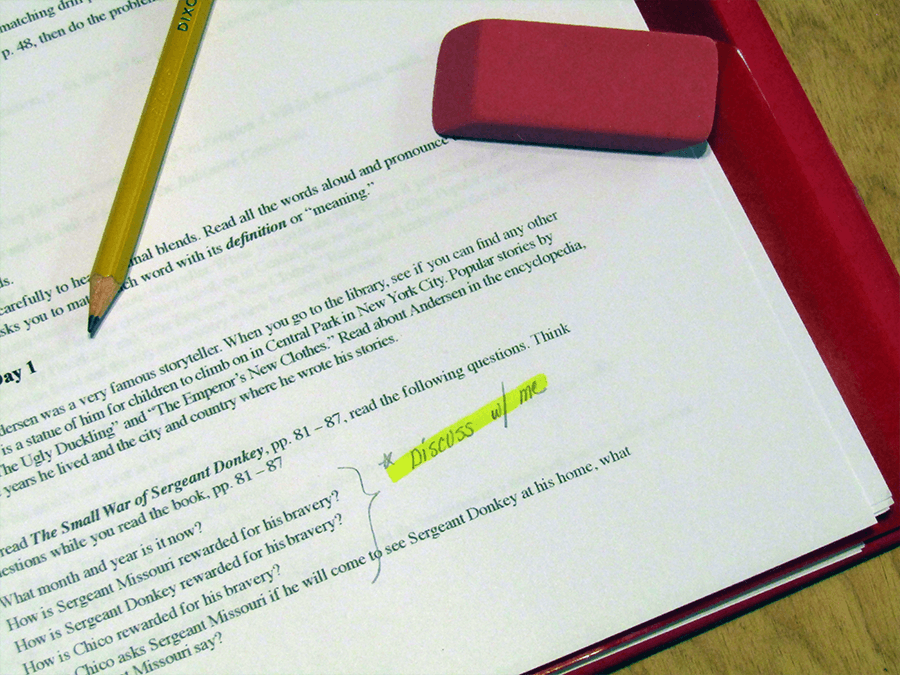
5. Put the printed lessons plans in a fun binder.
Before each quarter begins, I print all nine weeks of that quarter and place them in a colorful binder. Each of my students has four binders of the same color — one for the online weekly lesson plans, one for all the lesson plans (sent with the curriculum), one for answer keys and one for quarterly report forms and tests.
With several children enrolled at once, and four binders for each child, it helps to have them color coordinated! Printed binder spines indicating the student’s name and what the binder is for are helpful as well.
In past years, we have decorated the covers of the binders with pictures of the Stations of the Cross and the Mysteries of the Rosary (both can be purchased at setonbooks.com), which fit in the front and back cover sleeves of the binders nicely. Each year, it’s fun to change the covers, and this year we have pictures of my children’s favorite saints with accompanying quotes.
These are easy to find online and can be printed in color. A map, periodic table, or a copy of the Declaration of Independence also make good binder covers. Just don’t make the mistake I made one year and put pictures of the digestive system (thinking it would be a great way for my daughter to memorize some human anatomy terms for her health class). That didn’t go over so well!
There are many ways to customize Seton’s online lesson plans to suit your family. Check it out and see how they might help you this new school year.
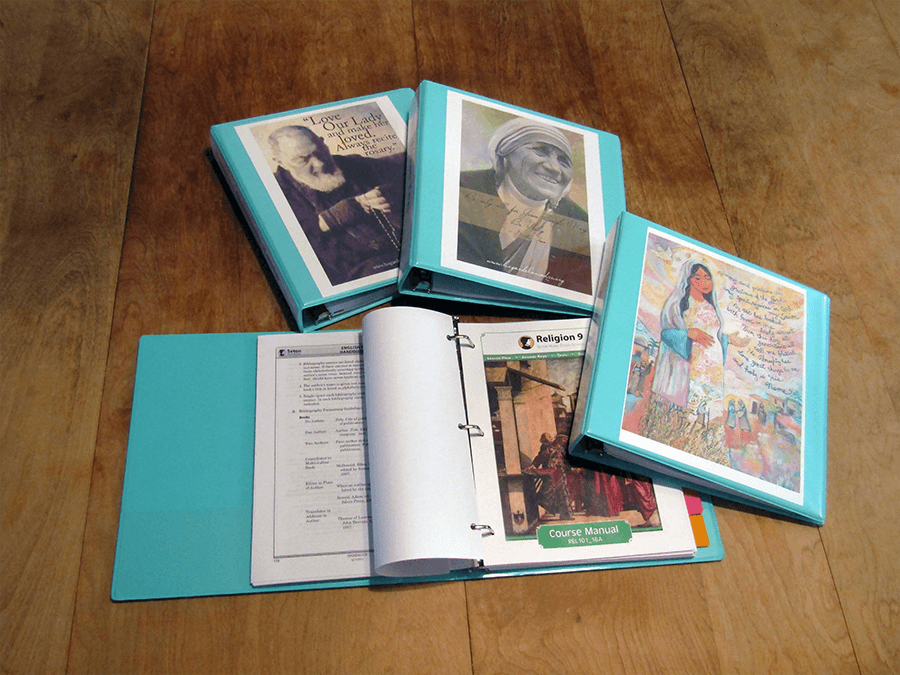
*as of 2024, Cheryl Hernández has been homeschooling with Seton Home Study School for 28 years!

 Seton Magazine Catholic Homeschool Articles, Advice & Resources
Seton Magazine Catholic Homeschool Articles, Advice & Resources

